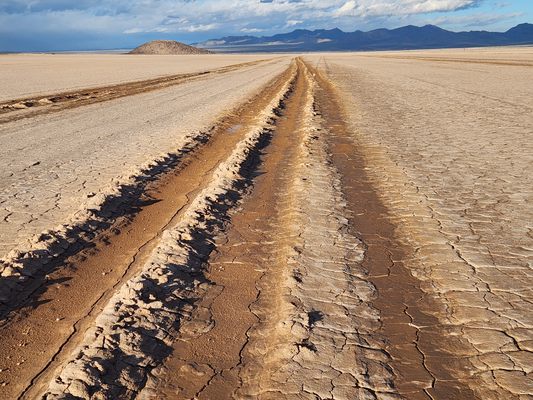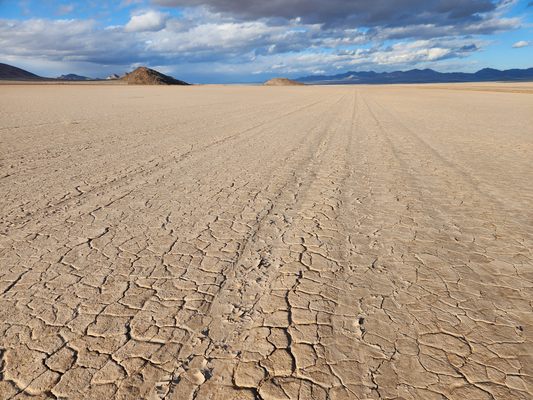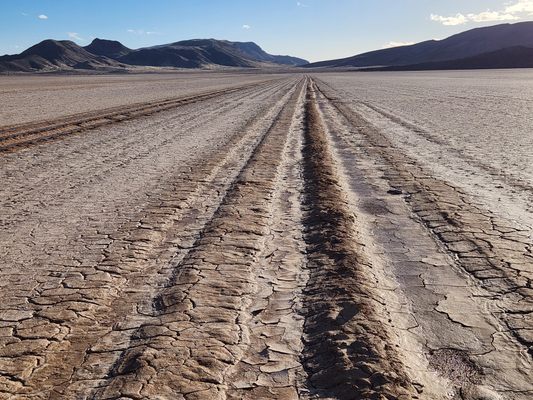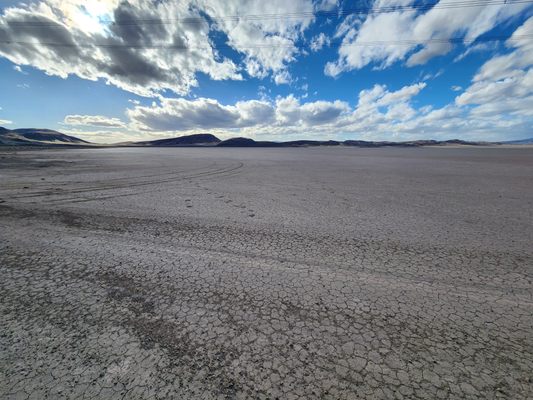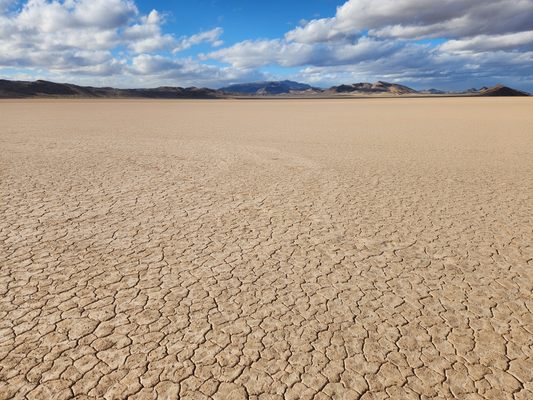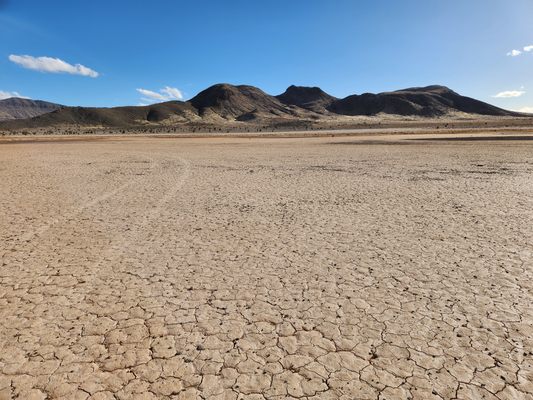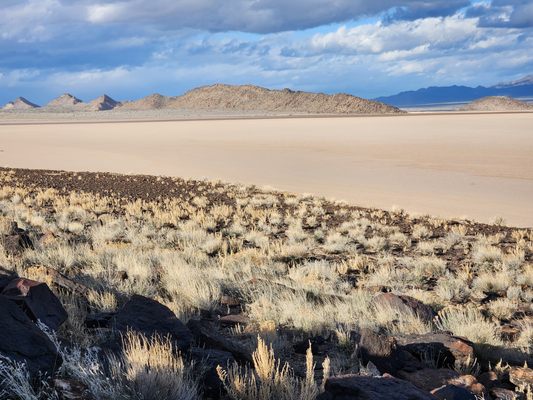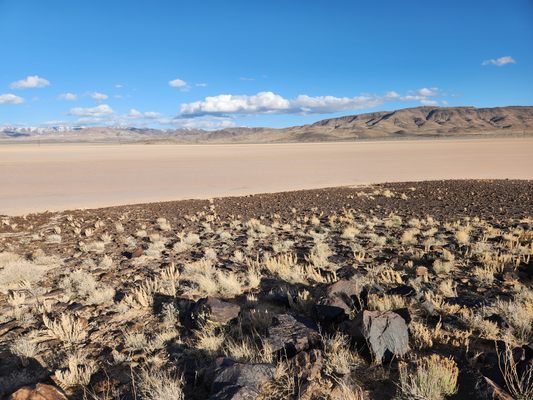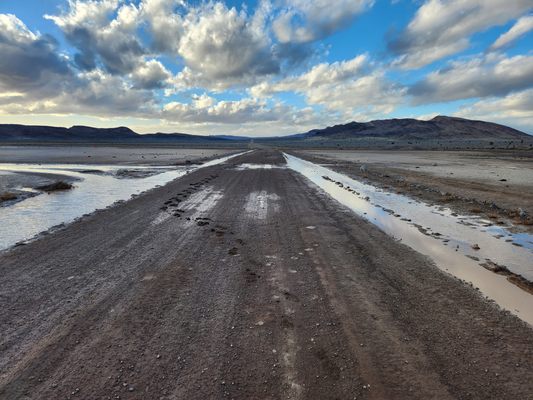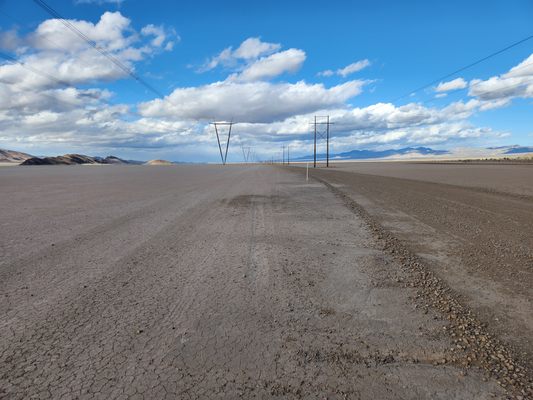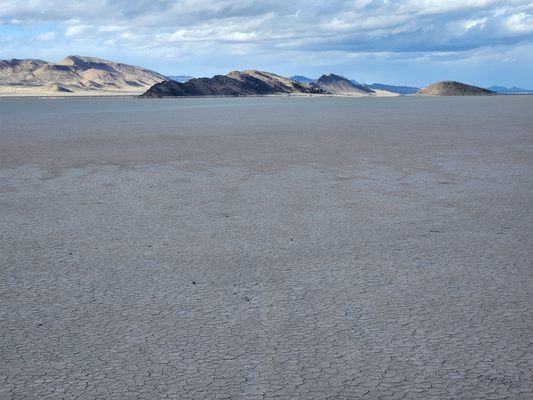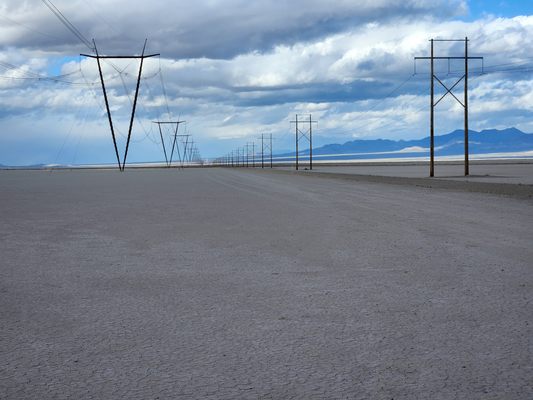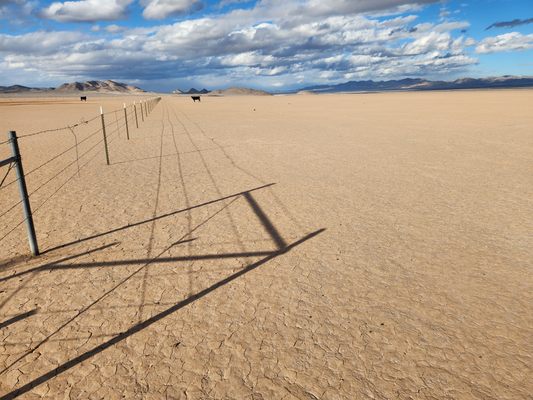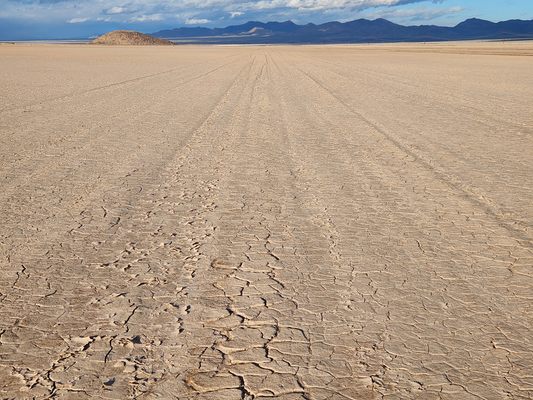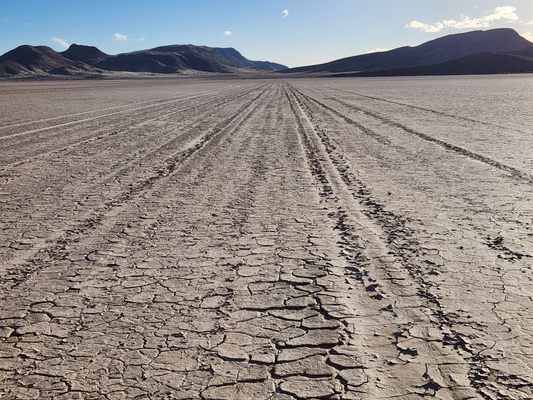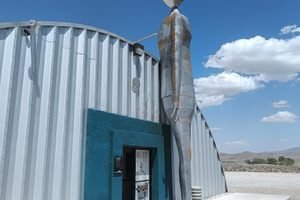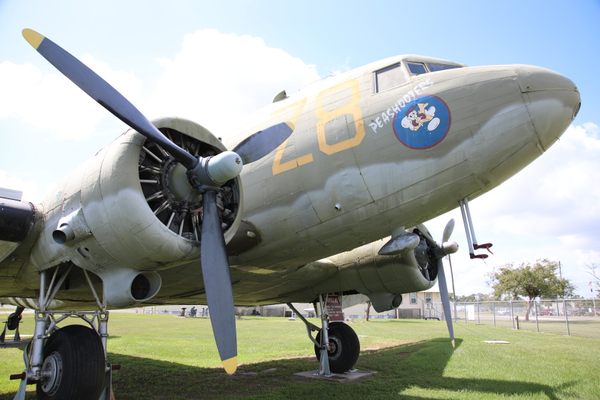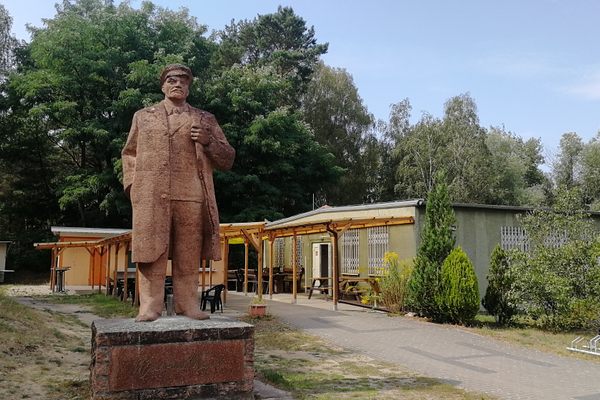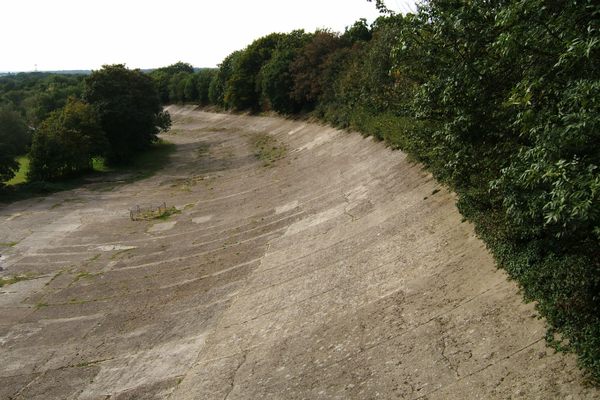About
Desert dry lake beds (also commonly called "playas," from the Spanish for "beach") are among the flattest and most extensive natural surfaces on Earth. Since the early 20th century, their flatness and extent have been exploited as courses for high-speed wheeled vehicles, such as with the land-speed records set on the Bonneville Salt Flats.
They also can serve as runways for aircraft, and were early used as emergency landing sites. Delamar Dry Lake, in particular, sits just north of what was to become the Nellis Bombing and Gunnery Range, and was designated an emergency landing site for military aircraft in 1943 during training for World War II.
Then came the X-15 rocket plane. This program is almost forgotten now, but it was the first venture into hypersonic flight with a crewed, winged aircraft to the edge of space. In fact, the Space Shuttle owes more to the X-15 program than to the Mercury through Apollo space capsule programs. The X-15 made nearly 200 flights from 1959 through 1968, setting some speed and altitude records that still stand, and several of the test pilots later received astronaut wings. (One of the test pilots was a then-unknown Neil Armstrong.)
The X-15 was carried to altitude under the wing of a modified B-52. When it was released the rocket engine would be fired and the mission would begin. The B-52 would take off from Edwards Air Force Base in California to various release points ("drop zones") over California and Nevada.
Emergency landing sites were especially important to the program, in case the rocket plane could not return to Edwards, and so some 50 dry lakes in California, Nevada, and Utah were surveyed as possibilities. They had to have exceptionally hard surfaces and be exceptionally long—Delamar Dry Lake fit the bill here too.
In May 1962, Armstrong landed a F-104 Starfighter chase plane on Delamar Dry Lake, in support of an X-15 mission, but the landing gear was damaged and he had to divert to Nellis Air Force Base outside Las Vegas. In May 1966, Delamar Dry Lake was used as an emergency landing site for X-15 flight 1-63-04 when the craft had engine failure.
The playa is no longer maintained as a designated emergency site. The old runway is now deeply rutted along its length, and would require significant refurbishment to make an acceptable airstrip.
Related Tags
Know Before You Go
Delamar Dry Lake is accessible to the public with no restrictions and can be reached after a long stretch on graded roads. The main road along Delamar Valley, which crosses the playa on the eastern edge, can be used. The distance is much shorter (about 10.7 miles) from its junction with US-93 to the south, at about 37.2009 N, 115.0455 W. However, this part of the road is very rough—high clearance will be required and 4wd is likely to be appreciated.
The graded road that comes from US-93 to the west (junction at about 37.33323 N, 115.13982 W) through Alamo Canyon can also be used. It crosses the north end of the playa by Black Rock Point, about 13.3 miles from the turnoff, and intersects the Delamar Valley road 1.1 miles farther on, at about 37.33302 N, 114.92301 W. It is somewhat smoother but high clearance is still strongly recommended. As noted below it is also usually muddy by Black Rock Point.
It is permitted to drive out onto the playa, but to do so safely the lakebed must be utterly dry. It doesn't take much water to mire a vehicle up to the axles, at which point you will be stranded very far from any assistance (do not count on cell service in the area). Furthermore, recovery of a vehicle in this predicament will be very expensive.
There are springs on the east and west edges of the dry lake, and by Black Rock Point, so these places can be assumed always to be muddy; take care accordingly.
There are a few petroglyphs at Black Rock Point; please treat them respectfully.
Community Contributors
Added By
Published
July 2, 2024
